Ammonium from aphids on currants
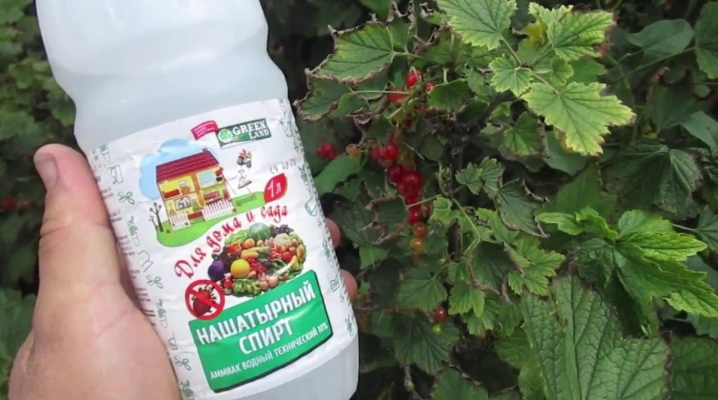
Ammonia is not only a medicine, but also an excellent assistant for the gardener. In addition to the well-known method of feeding plants with an aqueous solution of ammonia, it is often used to combat many types of pests. Ammonia from aphids on currants is excellent. This method of getting rid of insects is not only harmless, but even useful for berry bushes.
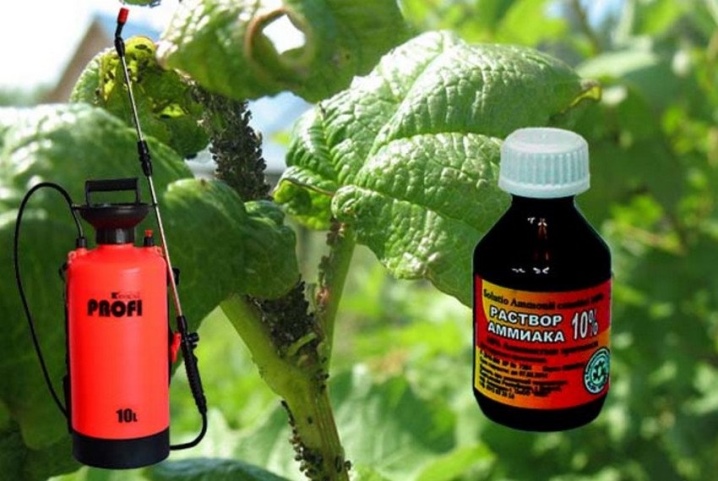
Benefit and harm
Ammonia, which can be purchased at the pharmacy, is an ammonia-based product. In its pure form, this gas is very dangerous, but in an aqueous solution its concentration is only 10%. Of course, for plants and this amount will be a lot, which will lead to burning of the leaves. Therefore, ammonia must be additionally diluted before use.
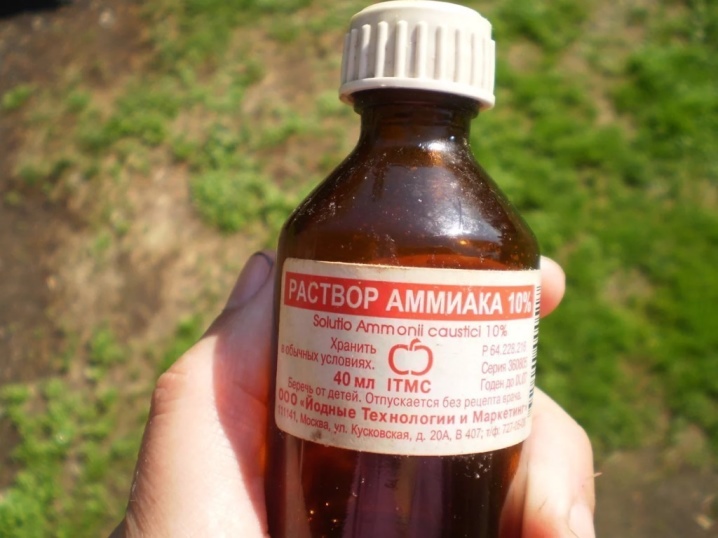
As for the use of ammonia from aphids on currants, it does an excellent job of repelling and destroying the pest. This effect is achieved due to its irritating effect. Firstly, insects cannot stand the pungent smell of ammonia, and secondly, when it enters the body of a pest, it causes paralysis of the respiratory system and subsequent death.
Important! The use of ammonia to control aphids on currants is allowed regardless of the vegetative period of the plant, unlike most insecticides.
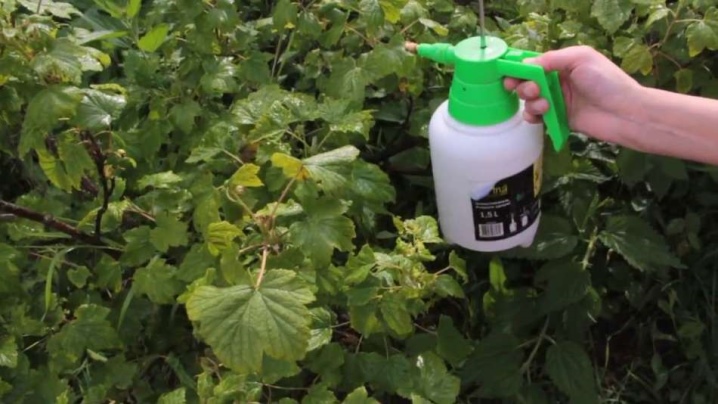
How to breed
By itself, ammonia can harm the currant bush, causing burns to the green mass. To avoid this, the product should be properly diluted. Moreover, if you need to process a small area (several branches), then it is better to use ammonia water, taking 2 tbsp for 1 liter of water. l. ammonia. And if it is necessary to process the bush completely or several plantings at once, the product should be prepared from 10 liters of water. In this case, a binder must be added for better adhesion of ammonia to the leaves.
Additionally, the addition of garlic infusion or red ground pepper will help to enhance the destructive effect of a solution based on ammonia.
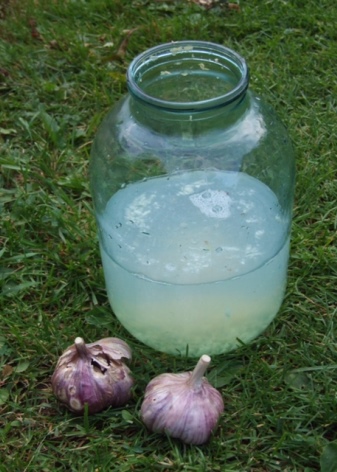

Preparation of a solution with laundry or tar soap
Ammonia together with laundry or tar soap is considered one of the most common recipes. Soap just acts as a binder to reduce the rate of evaporation of ammonia.
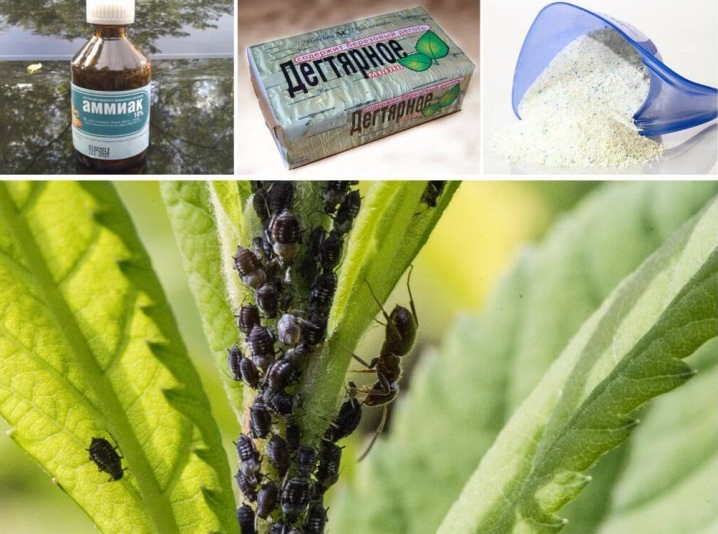
You can prepare the solution as follows.
- In 10 liters of water, it is required to dilute 50 ml of ammonia.
- Laundry or tar soap (also in the amount of 50 g) is rubbed, poured with hot water. Stir thoroughly and add to the container to the solution.
- The agent is mixed again, making sure to follow the safety rules.
The ready-made solution must be used immediately after mixing by spraying the bush.

For the recipe, you can use any other neutral soap or detergent, but it was the use of laundry or tar soap that showed the maximum effect in the fight against aphids.
Laundry detergent solution
Alternatively, you can use washing powder. But the action of the remedy will not be so strong, because the powder itself does not in any way affect the aphids, unlike laundry soap.
The solution is prepared in the following proportion per 10 liters of water:
- 80 ml of ammonia is diluted in warm water;
- add about 40 g of washing powder to the solution (you can use the most budgetary one);
- the agent is thoroughly mixed until the powder is well dissolved.
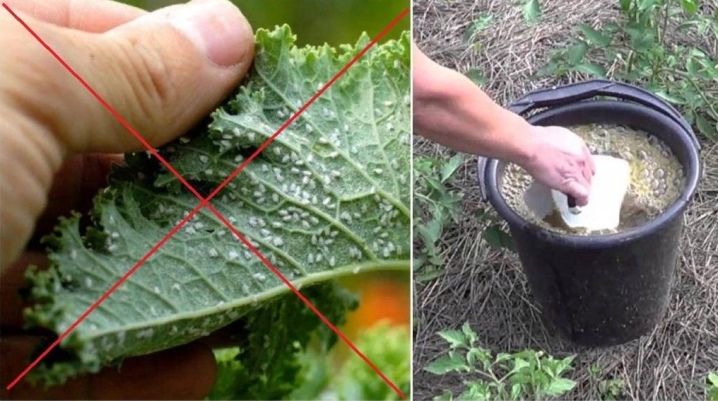
The ammonia composition with powder is also used immediately after dilution, observing all precautions.
Processing features
Ammonia, in the opinion of many owners of summer cottages, is considered the most affordable and effective means for combating aphids on currants, but, as practice shows, its effectiveness directly depends on the treatment carried out. Inexperienced gardeners can make a number of mistakes at the same time:
- using the product some time after preparation - in this case, its effectiveness will be reduced to zero, because ammonia (the active substance against aphids) evaporates very quickly;
- weak processing, which will allow insects that did not get the solution to survive and continue to reproduce;
- non-compliance with the dosage, which will entail oversaturation of the shrub with nitrogen or may lead to burning of the foliage.

If, nevertheless, it was decided to process the currant bushes with ammonia, then this must be done as correctly as possible. The best treatment option is considered to be spraying using a special device, for example, a spray gun for a small affected area or a lever knapsack sprayer for treating the entire bush.
It is important that the solution falls not only on the upper side of the foliage, but also on the inside, since aphids usually settle there. It is also necessary to spray the stems of the plant, including the root zone.
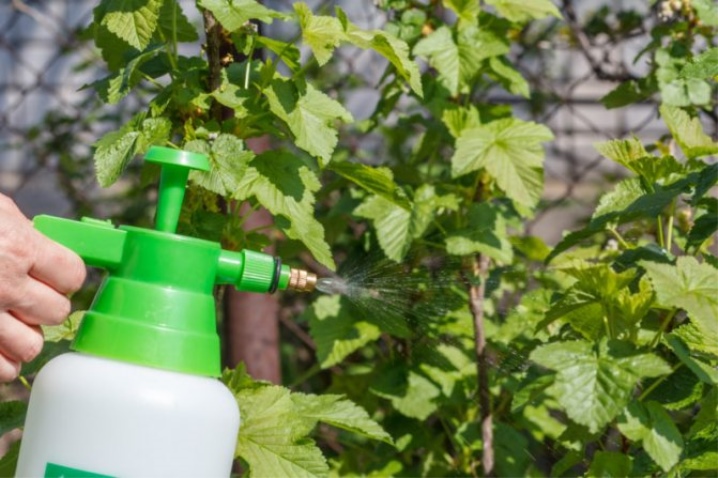
In the absence of a sprayer, you can use a watering can with a wide nozzle for treatment. Watering in this case begins from the very top, slowly moving the stream to the bottom of the bush.
During spraying and watering, the soil around the plantings should also be treated, this will destroy the aphid eggs.
It is better to process currant bushes in the morning or evening to avoid rapid evaporation.... You should also pay attention to the weather: it should be calm and dry. If it rains after the treatment, the event should be repeated the next day. If necessary, re-spraying it is carried out after 10-14 days.
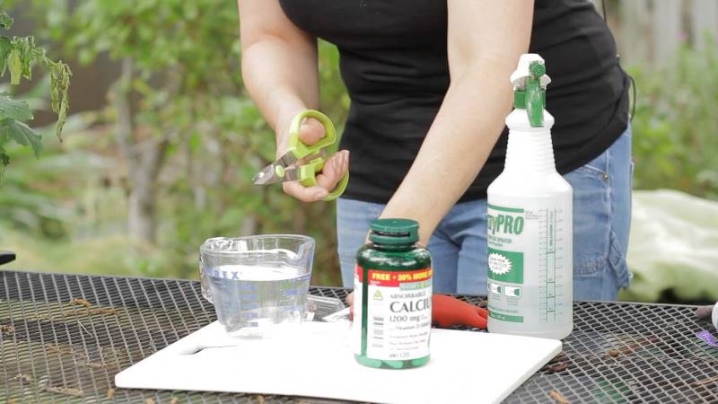
The main advantages of using ammonia against aphids on currants are the safety of the substance for the plant and the possibility of using it at different stages of its development. But since ammonia is still a nitrogen-containing agent, the treatment of bushes with berries should be carried out carefully and no more than 1 time during the fruiting period. Nitrogen acts on the plant as a growth stimulant, which can provoke increased shoot formation, and this will adversely affect the quality of the crop. It is also best to refuse autumn processing, because it will reduce the overall winter hardiness of the currants. Therefore, the most suitable time to combat aphids with an ammonia-based agent is spring, during the period of active growth of the bush. In addition, processing in the spring allows not only to get rid of insect pests, but also to prevent their appearance, as it contributes to the destruction of aphid eggs in the soil.
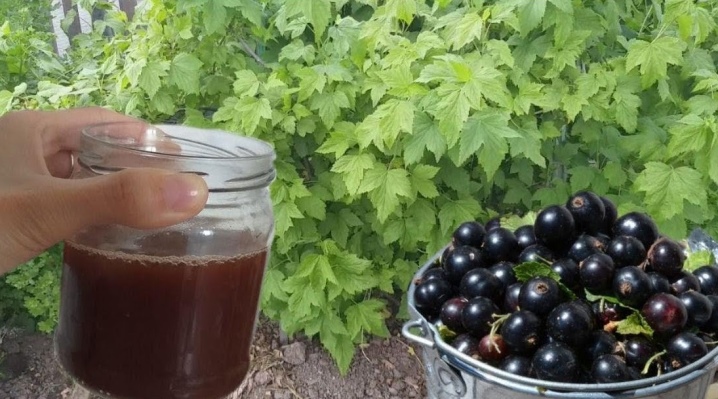
Precautionary measures
Ammonia, despite the small concentration of ammonia in its composition, can still cause significant harm to a person, because inhaling corrosive gas vapors can cause serious burns to the mucous membrane of the nose and trachea. And with prolonged contact with ammonia, intoxication or even temporary cessation of breathing may occur. Therefore, working with this drug is required exclusively in the fresh air or in a well-ventilated area.
Mixing the components, as well as processing currants with an ammonia solution, should be done using personal protective equipment. It is imperative to wear rubber gloves, goggles and, if possible, a respirator. If you do not have a respirator, you can use a multi-layer cloth mask.

If the solution gets on the skin of the hands, face or eyes, the nose should be immediately washed with warm clean water without using soap.
Ammonia from aphids on currants is a good and affordable means of protecting berry plantings from a prolific pest. Gardeners have long been using ammonia solution and successfully fight not only the rapidly spreading aphids, but also a number of other harmful insects, such as ants and whitefly.













The comment was sent successfully.